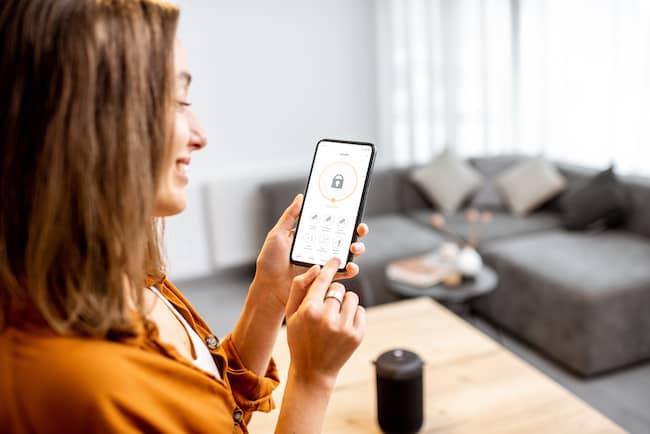Selling a home yourself, without a big real estate agent’s network to help you, comes down to marketing your asset to bring in the best offers. You need to know your buyers and their needs. Millennials make up the largest group of today’s home buyers. They’re educated, tech-savvy and more environmentally concerned than older buyers. They use smart phone apps to manage their lives and they’re starting families at a time when their salaries are still relatively low, so they may need to live frugally after buying a house.

You can appeal to these buyers with smart, eco features that help the new owners save money. But younger buyers are not the only ones interested in green technology. According to research from Smart Energy Consumer Collaborative (SECC), consumers are making the connection between smart energy and slowing climate change, and they’re more interested in smart-energy-enabled products. So how can you use smart home devices to sell your home?
To market your home’s eco smart home features, make an inventory of everything that fits the profile, starting with these, and include them in your property listing to capture the interest of buyers.
Heat pumps: Heating and cooling systems that rely on heat pumps are much more efficient than older systems. In fact, according to the Natural Resources Defense Council, air source heat pumps are roughly two to three times more efficient than creating heat by burning fossil fuels like oil or natural gas. If you’ve installed heat pumps in your home, quantify the savings over a typical utility bill and use it as a selling point.
Smart thermostats: Make sure to tout the money savings and convenience of smart thermostats like the Google Nest and Ecobee. They can automatically adjust heating and cooling to minimize costs, and they’re easily controlled in an app. According to Nest, smart thermostats can save 10 – 12% on heating and 15% on cooling, on average.
Leak detection: The average American family uses more than 300 gallons of water a day at home, and water costs have risen 30% in the past decade, so new homeowners are looking for ways to use water carefully. Water monitors from Phyn, Moen, Belkin and Alarm.com can alert the homeowner in an app if there’s a leak and even shut off the water automatically.
Home energy monitoring: The Sense home energy monitor is like a fitness tracker for the home, telling you what’s on and off, and how much electricity various devices use. You can use it to find and replace energy hogs like incandescent light fixtures and old pool pumps before you put your house on the market so you can tout the home’s energy efficiency. Homeowners can also make goals in the Sense app to stay on budget and set alerts to know what’s happening in the home (Is the sump pump running? Did I turn off the coffeemaker before leaving the house?).
Smart lighting: Most smart lighting systems use LEDs, which consume a fraction of the electricity compared to incandescent bulbs. They’re a great way to lower your home’s overall energy footprint while adding smart home appeal. For instance, the Phillips Hue lighting system can be controlled and scheduled in a smart phone app or by a smart assistant to suit the family’s individual schedule.
Smart sprinklers: Lawn irrigation systems can waste an enormous amount of water. Rachio smart sprinklers make every drop of water count. They use weather monitoring to schedule watering when it’s needed – no more sprinklers running in the rain! – and it connects to existing sprinkler systems to keep overall costs under control.
Solar panels: Solar is a major investment in the energy efficiency of your home. If you’ve installed solar panels, turn them into a selling point. Don’t assume that potential home buyers will think through the significant financial savings from solar. Put together an analysis of the potential energy savings over the next 10 years and include it in your listing. Your solar app should help make this kind of analysis easy.
Thinking about additional cost savings improvements, don’t forget to mention if you’ve installed windows that are rated for high efficiency or extra insulation that helps keep utility bills low.
When you add up all the smart, eco features in your home, you may just find it’s the dream house for today’s buyer.
This article was contributed by Carol McGarry, Director of Communications at Sense, the smart home energy monitor that provides real-time insights into the home, inspiring people to save money and live more responsibly. Find out more at sense.com.